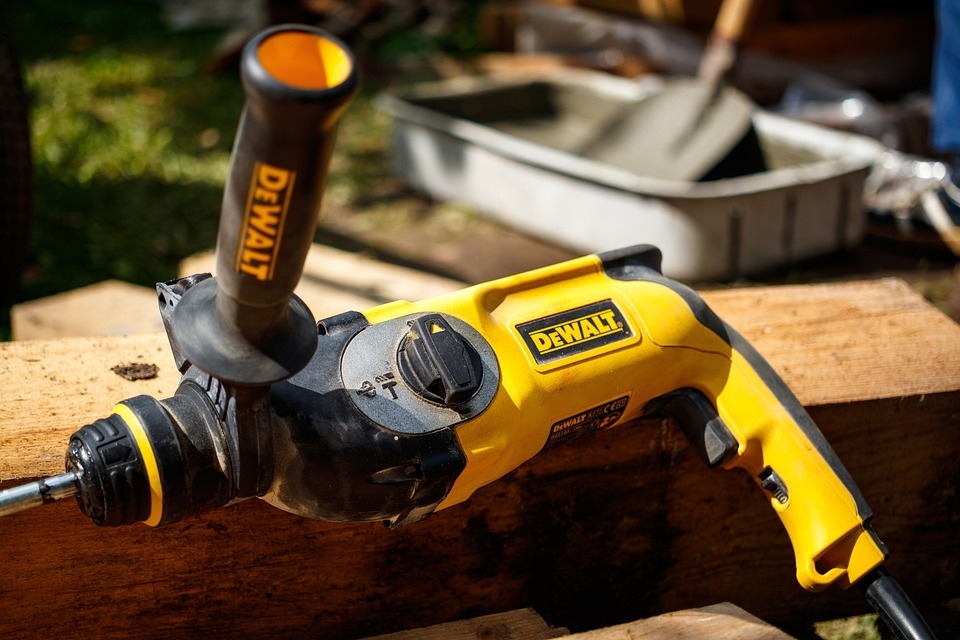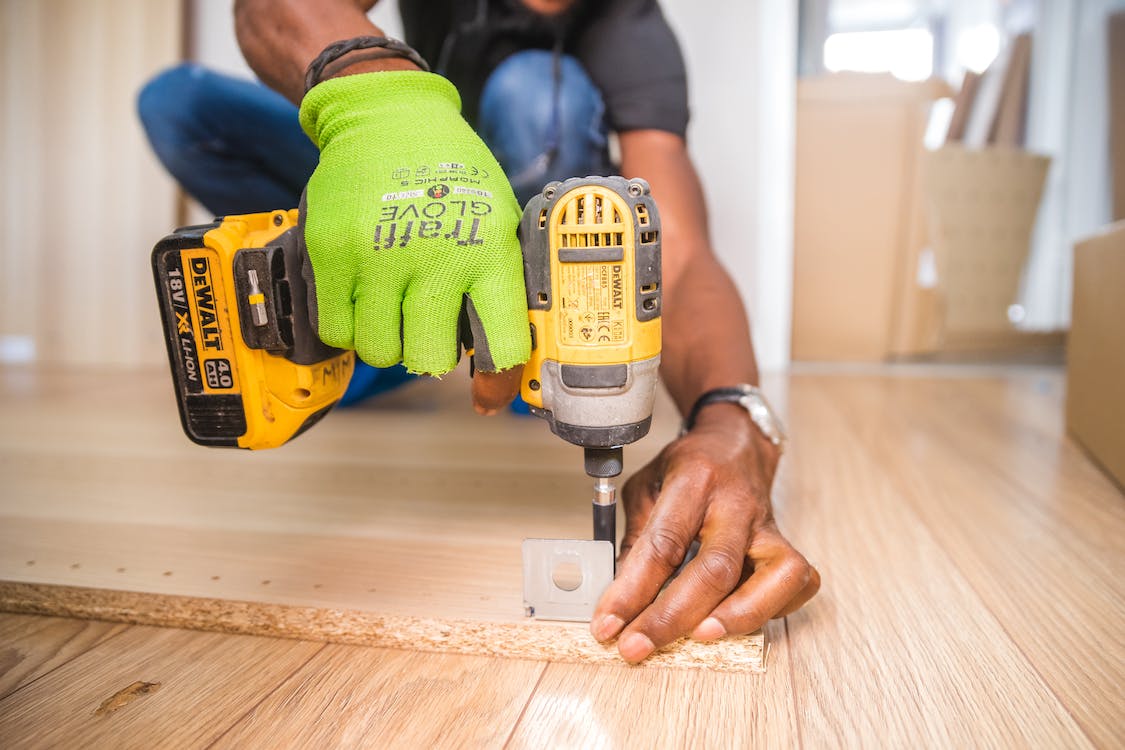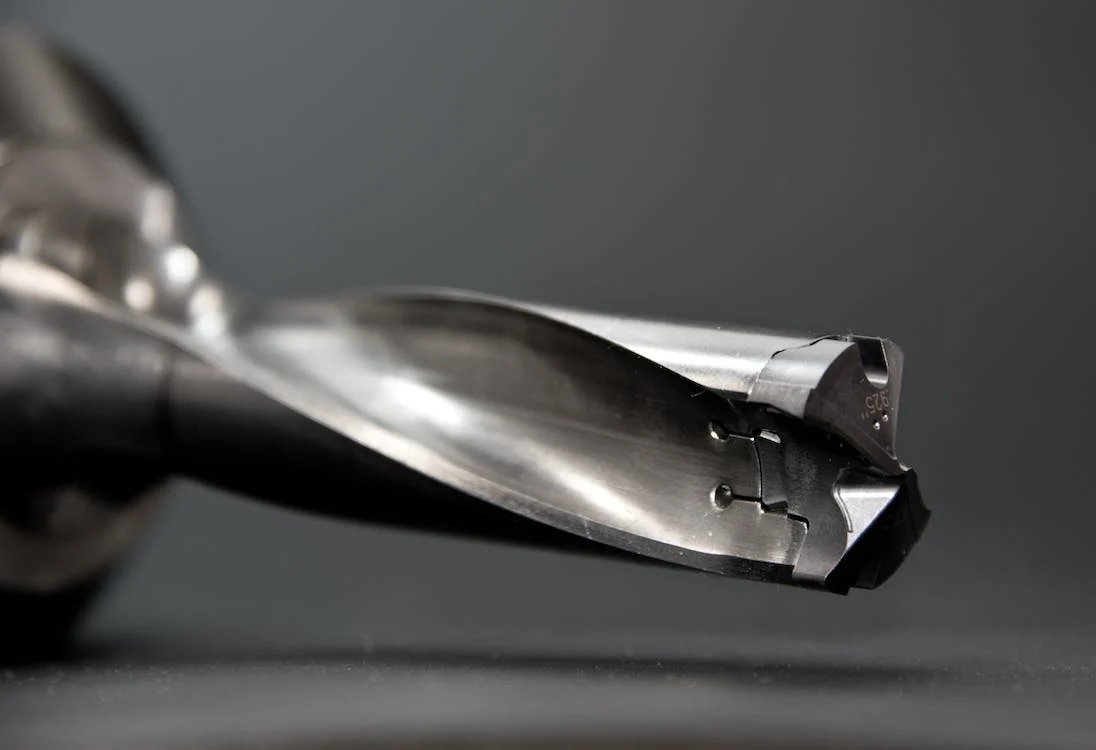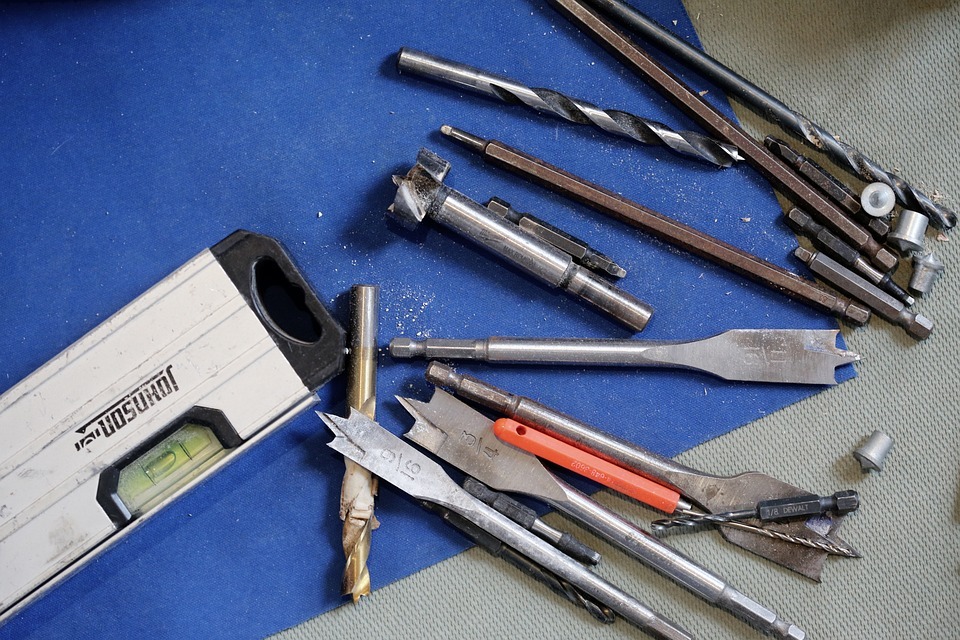Impact drivers and drills are often confused because of similarities between the two. For example, they look the same, are handheld, come with cords or batteries, and spin when you press the trigger. Things get even more complicated when you realize these tools can do each other’s jobs to a certain degree.
However, the truth is, these tools are quite different from each other. Everything from their working mechanism to the jobs they’ve been designed to handle is different. Even though their uses may overlap, they both serve a unique purpose at the end of the day. This post covers the differences between an impact driver and a drill as well as the most common applications of these power tools.
Impact Drivers vs. Drills: What’s the Difference?
The most important difference between impact drivers and drills is how they operate. Let us examine that first.
How Does an Impact Driver Work?
An impact driver delivers powerful bursts or “impacts,” using a hammer and an anvil system. This mechanism also allows impact drivers to generate higher torque than most drills. An impact driver can generate these bursts more than 50 times per second. Moreover, these power tools follow a two-step-forward-one-step-back pattern, which allows them to drive screws more efficiently, move stuck nuts, and deliver more power. This increased rotational force and torque differentiate an impact driver from a drill.
How Does a Drill Work?
Unlike impact drivers, drills generate a constant torque that keeps the drill bit spinning as long as the trigger is pressed. They don’t have a hammering mechanism like an impact driver but a motor and gears that generate constant rotary power.
This power allows users to bore holes, which is a drill’s primary function. However, you can also use a drill to turn screws, bolts, and fasteners. Sometimes when a drill gets stuck, users have to deliver short bursts by pressing and releasing the trigger manually. Therefore, the different internal mechanism makes drills unsuitable for jobs requiring high torque and power.
Impact Driver Torque vs. Drill Speed
An impact driver is preferred for jobs that require high torque because whenever a nut, bolt, or fastener is stuck, the driver’s internal hitting mechanism allows it to break loose or drive screws deeper. However, this comes at a cost: less speed.
On the other hand, a drill can drive a screw much faster than an impact driver in a head-to-head comparison. Unlike an impact driver, a drill rotates constantly and provides consistent speed, but at the cost of lower torque.
Straight Shank vs. Hex Shank
Impact drivers and drills differ in the types of bits and chucks they use. An impact driver usually features a ¼” hex chuck. This chuck accepts hex bits and locks them in place.
On the other hand, a drill uses a standard straight shank chuck. The drills either use a chuck key to tighten the drill bit in place or a keyless chuck that locks in the bit.
Size Comparison
Drills are generally bigger in comparison to impact drivers. Impact drivers have fewer working parts that are packed inside its body more compactly, while drills have more parts connected in an elongated fashion.
Ease of Use
Because of its power, an impact driver is more comfortable and easier to use. You don’t have to use extra force or pressure to drive tough nuts like you would when using a drill. This makes an impact driver lighter on your hands and wrists. It also improves accuracy, as drills can slip if pushed too hard.
Adjustable Clutch
Drills usually come equipped with an adjustable clutch that allows you to control torque. This is handy when you don’t want to overtighten a fastener or damage the drilling surface by applying excessive torque. However, impact drivers don’t feature an adjustable clutch.
Variable Speed
Like an adjustable clutch, impact drivers don’t usually feature variable speed. This functionality is quite common in drills. However, more and more companies are developing impact drivers with variable speed options.
Advantages and Disadvantages of Impact Drivers
Here are some key advantages and disadvantages of using impact drivers.
| Advantages | Disadvantages |
| ● Delivers powerful bursts that can screw through tough material and move stuck nuts and bolts.
● Can drive longer screws in tougher materials with ease. ● Typically more compact, allowing you to work in smaller spaces. ● Easier on hands, arms, and wrists, as the user does not need to apply supplementary force. ● Powerful enough to remove stripped screws, and does not strip screws often. |
● Not suitable for delicate jobs or materials.
● Are usually costlier than drills. ● Are louder than drills. ● Most impact drivers do not support straight-shank drill bits, limiting the options. |
Advantages and Disadvantages of Drills
Here are some key advantages and disadvantages of using drills.
| Advantages | Disadvantages |
| ● Best for multipurpose use and applications.
● Suitable for delicate materials and tasks. ● Straight-shank chuck allows for more variety in terms of drill bits. ● Can be equipped with different accessories like rotary sanders. ● An adjustable clutch helps you control the torque. ● More affordable than impact drivers. |
● Can strip screws.
● Not suitable for longer fasteners. ● Not suitable for moving stuck fasteners, nuts, or bolts. ● Bits can become loose inside the chuck while working. ● Is taxing on the user’s hands, wrists, and arms. |
When to Use an Impact Driver
An impact driver is the tool to choose when working with denser and tougher materials, long screws, or jammed nuts. For example, your traditional drill might have difficulty driving a 3-inch screw into knotty wood. An impact driver will do this job without much hassle and without being tough on your hands. Moreover, when working with machine bolts or lag bolts, an impact driver can save you a lot of time and effort than using a drill.
Here’s a some of the things you can do with an impact driver:
- Tightening/loosening stuck bolts.
- Loosen or tighten bolts on an engine.
- Deck frame assembly.
- Driving fasteners into metal
- Removing stuck fasteners
- Driving lug bolts and screws with a bigger diameter
- Tightening or loosening bolts on mowers and trimmers
These are just some examples of impact driver applications. Impact drivers are also suitable for other heavy-duty driving, tightening, or loosening jobs that requires more power, force, and torque.
When to Use a Drill
When you want to handle jobs that involve smaller screws and softer surfaces, it is best to choose a drill. A drill is faster and more efficient for many DIY and home applications, as you don’t often have to turn a stuck lug nut around the house. A drill’s primary function is drilling holes, which makes it more suitable for precision drilling tasks.
Moreover, using an impact driver to drive smaller screws can make for an unpleasant surprise. Impact drivers use so much force that sometimes it might drive a screw deeper than you want or break through the drilling surface altogether.
For example, one of the most common applications of a drill is driving drywall screws. You need precise control so that the screw head doesn’t go too deep and damage the paper. An impact driver can generate an excessive force for these kinds of delicate jobs. That is not to say a drill is not suitable for tougher materials. Different drill bits are available to drill into surfaces like concrete and metal, but impact drivers and drills are suitable for different tasks.
Here’s a list of some things you can do with a drill:
- Subfloor installation before hardwood flooring.
- Making pilot holes to prevent screws from damaging the drilling material.
- Driving and drilling into soft materials like wood, plastic, and drywall.
- Tightening and loosening screws that don’t require too much torque
- Drilling holes into metal and masonry (using specialized bits)
- Grinding or deburring
- Mixing paint
- Stripping rust or paint
Impact Driver or Drill: How to Choose?
If you’re still wondering whether to choose a power drill or an impact driver, here’s a suggestion that might help: If you only want to buy one tool, it might be a good idea to go with an impact driver. Companies like DeWalt and Milwaukee now make drill bits that can also fit impact drivers. This means you can handle almost all the tasks with a single power tool. However, if you can afford to spend a little more and have a variety of tasks at hand, it is best to assemble a two-tool kit that features both a high-quality drill and an impact driver.
FAQs
1. Can you use an impact driver to drill holes?
Yes, you can use an impact driver to drill holes. Popular power tool brands are now developing hex-shank drill bits compatible with impact drivers. But every impact driver is not a suitable tool just for drilling holes.
2. Are impact drivers and impact wrenches the same thing?
No, they aren’t the same thing. Even though the impact wrench has the same working principle, it is made to handle more challenging jobs. This is due to their chuck specifications. Impact drivers use a ¼” hex drive, while impact wrenches use a ⅜” square drive (or larger). The bigger chuck size allows impact wrenches to move or drive bigger nuts and bolts, such as on bridges, ships, and other professional applications.
3. Can you use drill bits in impact drivers?
You cannot use a traditional drill bit in an impact driver. Impact drivers support specialized ¼” hex shank bits. If you wish to drill with an impact driver, use a hex drill bit specially made for the product you’re using.
Final Words
Choosing between an impact driver or a drill ultimately comes down to whether you want to focus on power or rotational speed. Impact drives produce a lot of torque that makes tough jobs easy. Drills are best suited for various tasks that don’t require bursts of energy, but do require higher speed and precision.
Moreover, impact drivers take the lead when it comes to comfort. If you’re handling delicate projects, you would probably have to invest in a drill nonetheless. Lastly, always make sure to follow the proper safety precautions whenever you’re handling power tools.






